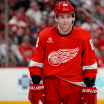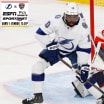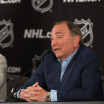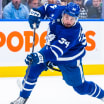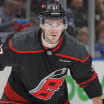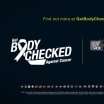Leland "Hago" Harrington raised the bar for hockey in the United States long before Tom Barrasso, Bobby Carpenter and Phil Housley did as an outstanding high school player who went directly to the top ranks of the sport.
Harrington, pioneering player, headed to U.S. Hockey Hall of Fame
Massachusetts native was first to make jump from high school to top ranks of sport
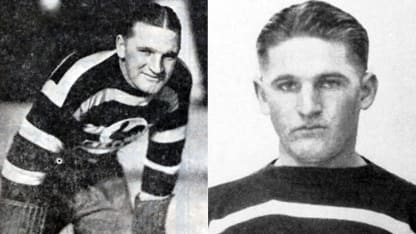
Harrington, the first NHL player born and trained in the United States to have a hat trick, died on July 1, 1959, at age 54. He will join Barrasso, Carpenter and Housley when he's inducted into the U.S. Hockey Hall of Fame on Wednesday in Nashville. Also going into the Hall are Nashville Predators general manager David Poile, former NHL player and longtime University of Michigan coach Red Berenson, former NHL player and referee Paul Stewart and three-time Olympic medalist Natalie Darwitz.
The NHL Draft was decades away when Harrington was coming out of Melrose High School in Massachusetts, so he joined the Boston Athletic Association (BAA) in the eastern section of the United States Amateur Hockey Association (USAHA).
"The USAHA was technically amateur but was the highest [league] we had in the United States, and the Boston Athletic Association was a power in that league," said Roger Godin, the original curator of the U.S. Hockey Hall of Fame Museum. "In 1924, Harrington is 19 years old and he basically joins BAA out of Melrose High School. That puts him in the category of Barrasso, Carpenter and Housley.
"He went from high school to the major league, and it's been lost because most don't have that appreciation to the status of USAHA."
Barrasso played at Acton-Boxborough Regional in Massachusetts, was selected No. 5 in the 1983 NHL Draft by the Buffalo Sabres and began his NHL career in 1983-84. Carpenter played at Saint John's in Massachusetts, was chosen No. 3 in the 1981 NHL Draft by the Washington Capitals and began his NHL career in 1981-82. Housley played at South St. Paul in Minnesota, was selected No. 6 in the 1982 NHL Draft by the Sabres and started his NHL career in 1982-83.
In 1924-25, Harrington's second season in the USAHA, the Boston Bruins were in their first NHL season; they signed him to a professional contract in the winter of 1925. At the time Boston was last in the seven-team NHL. In 1925-26, Harrington played left wing with center Jimmy Herberts and right wing Carson Cooper; they formed the highest-scoring forward line in the NHL (61 goals, 82 points), but the Bruins missed the Stanley Cup Playoffs by one point.

Harrington was 21 on Feb. 13, 1926, when he became the first NHL player born and trained in the U.S. to have a hat trick when he scored three goals in a 7-4 win against Toronto St. Patricks. Harrington scored 8:00 into the first period to give Boston a 2-0 lead; 13:00 into the second for a 4-2 lead; and 10:30 into the third to make it 7-3. Harrington also had one assist and Herberts scored three goals in the game.
Sally Harrington, his daughter, was too young to remember the on-ice success. But she can recall a few special off-ice moments with her father.
"He was a very gregarious, outgoing man," she said. "Our cellar was full of hockey sticks and pucks and clothes, and boys used to come over to the house and he'd give them things. I don't remember much of my father's playing days since I was 18 when he passed. I just remember one time he took me to the rink and players were coming over and giving me candy; I was 6 years old."
Sally, 77, a dancer in the New York City Ballet for 22 years, said one of the fondest recollections she has of her dad is the miniature golf course he designed and had built in Stoneham, Massachusetts. The course was named "Hago Harrington's Mini Golf" in his honor in 1950 and remains a popular tourist attraction.
"He was working on that golf course a lot when I was growing up and was very proud of it," Sally said. "He'd always ask me to come to the course to look at the new flowers. It was adorable. I'm touched that they still kept the name and it's still going strong."
Long before the golf course, Harrington was known for dominating the high school ranks while playing for Melrose.
"He had 10 goals in a high school game once," said Gary Eggleston, a Massachusetts Hockey Hall of Fame selection committee member and former evaluator for NHL Central Scouting. "He had several games where he scored five and six goals to lead Melrose to the Greater Boston Interscholastic League championship."
Harrington had 43 points (34 goals, nine assists) in 48 games for New Haven of the Canadian American Hockey League (CAHL) from 1926-28. He also scored one goal in 22 games with the Bruins in 1927-28 before Boston sold him to Providence of the CAHL in October 1928. The CAHL existed for 10 seasons beginning in 1926 before merging with the International Hockey League to form the International American Hockey League, which became the present-day American Hockey League in 1940.
"To me, the primary basis for his induction into the U.S. Hockey Hall of Fame would be his outstanding career in the Can-Am league, principally with the Providence Reds," Godin said.
Harrington was the all-time leader in the CAHL with 246 points (126 goals, 120 assists) in 347 games. He spent eight seasons with Providence and in 1931-32 was named a First Team All-Star and league MVP; it was the only season the CAHL presented the award.
Providence won the Henri Fontaine Cup as CAHL champion three times (1930, 1932, 1934); Harrington had 84 points (39 goals, 45 assists) in 116 regular-season games during the three championship seasons.
His last shot in the NHL came when Providence traded him to the Montreal Canadiens for three players in January 1933. He had a goal and an assist in 24 games for the Canadiens but returned to Providence after the 1932-33 season and played there until he retired as a player in 1936.
Harrington became part of the management group of the Boston Garden and was coach of the Boston Olympics of the Eastern Amateur Hockey League for eight seasons (1940-48). The Olympics became the farm team for the Bruins, and Harrington led them to four consecutive league championships (1944-47).
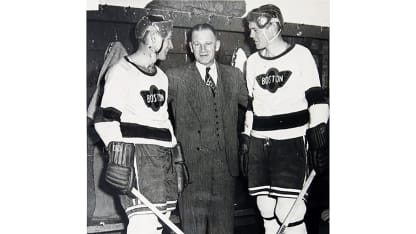
Hockey historian Stan Fischler recalls being enamored with Harrington's nickname.
"I started watching hockey when I was 7 years old in 1939. But I was deemed too young to go to New York Rangers or New York Americans games, which started at 8:30 at night. So as a result, my dad took me on Sunday afternoon to watch the amateur doubleheaders," Fischler said. "The New York Rovers played at the old Garden then, and one of their standard foes happened to be the Boston Olympics, a team I grew to love.
"When I scanned the lineup of the Olympics when they were in town, I would always see the name Hago Harrington and, being a fan of odd names, always wanted to meet a Hago. I never did get a chance to meet him, but I soon got to appreciate how well he carved the Olympics' roster into a winner."
How Harrington received his nickname is still a mystery.
"My best guess is that it most likely came about, as most hockey nicknames do, from a linemate, who may have called him Hags, which became Hago," Eggleston said.
Fischler said he admired everything about the Olympics, especially their jerseys.
"Hago's Olympics appealed to me right down to their understated-but-classy jerseys with the winged Olympic crest on the front," he said. "In my estimation, the performance of the Boston Olympics, year in and year out from the early World War II years through the postwar period, underlined a cogent point ... that Harrington was an American hockey leader whose good works marked him for the U.S. Hockey Hall of Fame."
